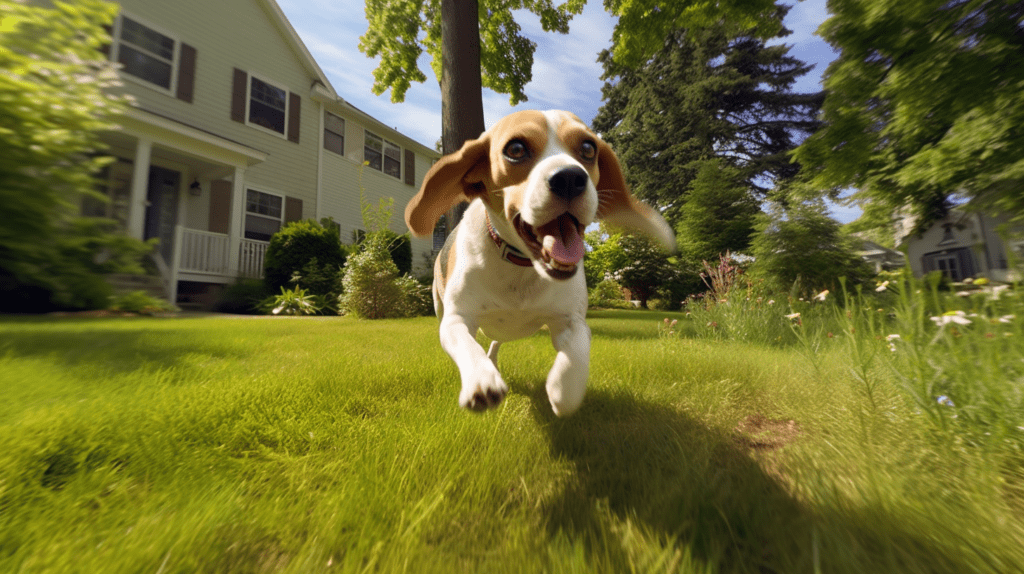Are you curious about the beagle size? Beagles are an endearing breed of dogs, cherished for their cheerful personality and striking appearance. One of the critical traits that potential adopters or Beagle parents need to understand is their size. Adult Beagles typically weigh less than 20 pounds if they stand under 13 inches tall, while those measuring 13-15 inches tall weigh between 20-30 pounds. Understanding the size of a Beagle is vital for any prospective or current owner to ensure proper care for this charming breed.
In this extended article, we will delve into the nitty-gritty of Beagle size. We’ll discuss factors that contribute to their size, compare their size with other dog breeds, and address health concerns that could be linked to their size. We’ll also provide you with tips on maintaining a healthy size for your Beagle. This article aims to offer a comprehensive understanding of Beagle sizes, ensuring you have the knowledge necessary to provide optimal care for your furry friend.
Contents
- 1 Size and Statistics On Beagle
- 2 History and Origin of Beagles as Hunting Dogs
- 3 Understanding Beagle Sizes
- 4 Factors That Can Influence Beagle Size
- 5 Beagle Size Comparison with Other Dog Breeds
- 6 Health Concerns Related to Beagle Size
- 7 Beagle Care Tips for Maintaining a Healthy Size
- 8 Myths and Misconceptions About Beagle Size
- 9 Expert Opinions on Beagle Size
- 10 Conclusion: Understanding and Nurturing Beagle Size
Size and Statistics On Beagle
| Statistic | Measurement |
|---|---|
| Height (Male) | 14-16 inches |
| Height (Female) | 13-15 inches |
| Weight (Male) | 22-25 lbs |
| Weight (Female) | 20-23 lbs |
History and Origin of Beagles as Hunting Dogs
Beagles have a rich, storied history that dates back to England. They were bred for their compact size and keen sense of smell, traits that made them exceptional at hunting small game, particularly rabbits. Their small stature allowed them to navigate dense undergrowth and forests with ease. The name “Beagle” is believed to have originated from the French term “begueule,” which translates to “open throat” in English. This terminology refers to the breed’s distinctive baying sound while on the hunt.
The history of Beagles is not just fascinating but also helps potential owners understand the breed’s size and behavior. Knowing that Beagles were bred for hunting can help explain their high energy levels and need for regular exercise. It also accounts for their compact size, which was ideal for their original purpose as hunting dogs.
Understanding Beagle Sizes
Beagles fall into two main size categories: those measuring under 13 inches and those between 13-15 inches tall. The weight of adult Beagles varies, with smaller Beagles generally weighing less than their larger counterparts. For example, a six-month-old Beagle typically measures between 10-13 inches tall and weighs around 12-17 pounds. Most Beagles reach their full height by the time they’re eight months old and their full weight by 18 months.
To help you better understand the growth and development of Beagles, consider using a size chart. This chart provides a visual representation of the expected height and weight of Beagles at various ages. It’s an incredibly useful tool to track your Beagle’s growth and ensure they’re within the appropriate size range for their age. Understanding these stages of growth can also help you anticipate and address any health concerns that might arise as they mature.
Factors That Can Influence Beagle Size
Several factors can influence the size of a Beagle. Genetic factors play a significant role in determining how big a Beagle will grow. The genes inherited from their parents can dictate whether a Beagle will be on the smaller or larger side of the breed’s size spectrum.
In addition to genetics, other factors such as diet and exercise can also impact a Beagle’s size. Weight variations can occur within the breed due to factors like the amount and quality of food they consume and the level of physical activity they engage in. Beagles are prone to obesity, so it is important to carefully portion their food and provide them with regular exercise to maintain a healthy weight.
To summarize, the following factors can influence a Beagle’s size:
- Genetics: The size of a Beagle’s parents can significantly influence the size of the offspring.
- Diet: The quality and quantity of food can impact a Beagle’s size and weight.
- Exercise: Physical activity can prevent obesity and contribute to a Beagle’s overall health.
Beagle Size Comparison with Other Dog Breeds
When compared to other breeds, Beagles fall into the small to medium-sized category. Beagles are relatively small when compared to smaller breeds like Chihuahuas and Shih Tzus, and are substantially smaller than larger breeds such as Labradors and Golden Retrievers.
While size can give you an idea about a dog’s physical needs, it doesn’t necessarily determine their behavior or temperament. Beagles may be smaller than some other breeds, but they’re just as intelligent, loyal, and energetic. When choosing a breed, consider factors beyond just size, such as their activity requirements and compatibility with your lifestyle.
Health Concerns Related to Beagle Size
Like any breed, Beagles can be prone to specific health problems linked to their size. One common health concern is cervical intervertebral disk disease, which affects the spinal discs in the neck region. This condition can cause pain, weakness, and in severe cases, paralysis. Regular veterinary care is crucial for tracking and maintaining a Beagle’s long-term health, especially when it comes to potential issues related to their size.
To provide a safety net for your Beagle’s health, consider investing in pet insurance. Pet insurance can help cover veterinary expenses and ensure that your Beagle receives the necessary medical care when needed. It’s a small step that could make a big difference in your Beagle’s health and happiness.
Beagle Care Tips for Maintaining a Healthy Size
Maintaining a healthy size is essential for a Beagle’s overall well-being. Regular exercise is crucial to keep Beagles fit and to prevent obesity. Beagles are active dogs that require daily physical activity to burn off excess energy and maintain a healthy weight. Engage your Beagle in activities such as walks, playtime, and interactive toys to keep them physically and mentally stimulated.
Feeding practices and diet also play a significant role in maintaining a healthy size for your Beagle. Consult with your veterinarian to determine the appropriate portion sizes and choose a high-quality dog food that meets their nutritional needs. Avoid overfeeding and monitor their weight regularly to ensure they are neither underweight nor overweight.
In addition to exercise and diet, regular veterinary check-ups, vaccinations, and preventative treatments are essential for their overall health and well-being. Here are a few tips for maintaining a healthy Beagle size:
- Regular exercise: This can include daily walks, playtime, and interactive toys.
- Balanced diet: Consult your veterinarian for portion sizes and choose high-quality dog food.
- Regular vet check-ups: These can help identify potential health issues early.
- Controlled feeding: Avoid overfeeding and monitor their weight regularly.
Myths and Misconceptions About Beagle Size
A few myths and misconceptions circulate about Beagle size. One of the most common is that all Beagles are the same size. In reality, as we’ve discussed earlier, Beagles come in different size categories based on their height. It’s important to understand that not all Beagles will fall within the same size range.
Another misconception is that Beagles aren’t prone to obesity. In fact, Beagles can easily gain weight if their diet and exercise aren’t properly managed. It’s crucial to monitor their diet, portion sizes, and provide regular exercise to prevent obesity and maintain their overall health.
Expert Opinions on Beagle Size
Veterinarians and dog experts often emphasize the importance of maintaining a healthy size for Beagles. They advocate for a consistent exercise routine and dietary regulation to manage a Beagle’s weight and health. Regular veterinary care and preventative treatments are also crucial for tracking and addressing any health concerns related to size.
By following expert advice and providing appropriate care, you can ensure that your Beagle remains healthy and happy throughout their life.
Conclusion: Understanding and Nurturing Beagle Size
In conclusion, understanding Beagle size is crucial for potential and current owners to provide appropriate care and ensure their well-being. Beagles come in two size categories, and their average weight varies depending on their height. Genetic factors, diet, and exercise can influence a Beagle’s size. They are considered a small to medium-sized breed when compared to other dog breeds.
Health concerns related to Beagle size include specific genetic health problems, such as cervical intervertebral disk disease. Regular veterinary care and pet insurance can provide a safety net for these health concerns. Maintaining a healthy size through regular exercise, appropriate feeding practices, and a customized care plan is essential.
By debunking myths and misconceptions about Beagle size and seeking expert opinions, you can ensure that your Beagle remains healthy and happy. Understanding and nurturing Beagle size will contribute to their overall well-being and quality of life.





